Are you eagerly anticipating a trip to Japan and wondering, “When Will Fuji Open For Tourism?” SIXT.VN is here to provide you with the latest information and comprehensive travel advice to make your Mount Fuji adventure unforgettable. From understanding opening dates to planning your itinerary and ensuring a smooth travel experience, we’ve got you covered. Discover the magic of Mount Fuji with SIXT.VN, your gateway to exceptional Japan travel experiences, offering convenient airport transfers, comfortable hotel bookings, and expertly guided tours.
1. Understanding Mount Fuji’s Tourism Season
When can you actually visit this iconic mountain?
Mount Fuji’s official climbing season typically runs from early July to mid-September. This period offers the most favorable weather conditions and ensures that the mountain’s trails and facilities are open and maintained. However, the exact dates can vary slightly each year, so it’s essential to stay updated with the latest announcements.
1.1 Factors Influencing the Opening Dates
Several factors determine when Mount Fuji opens for tourism each year:
- Weather Conditions: The primary factor is the weather. The trails need to be free of snow and ice for safe climbing. Authorities monitor snowmelt and weather patterns closely.
- Trail Maintenance: Before the climbing season begins, trails undergo maintenance to ensure they are safe and accessible. This includes repairing damaged sections, clearing debris, and setting up safety measures.
- Facility Preparations: Mountain huts, restrooms, and other facilities along the climbing routes need to be prepared for the influx of tourists. This involves stocking supplies, ensuring hygiene standards, and training staff.
1.2 Staying Updated on Opening Dates
To get the most accurate and up-to-date information on when Mount Fuji will open for tourism, follow these reliable sources:
- Official Websites: Check the official websites of the local municipalities and tourism boards around Mount Fuji, such as the Fujiyoshida City website and the Shizuoka Prefecture website. These sites usually publish the exact dates well in advance.
- Japan National Tourism Organization (JNTO): The JNTO website is an excellent resource for general travel information about Japan, including updates on Mount Fuji’s climbing season.
- SIXT.VN Travel Updates: Subscribe to SIXT.VN’s newsletter and follow our blog for the latest travel advisories, tips, and opening date announcements for Mount Fuji and other destinations in Vietnam.
2. Why Visit Mount Fuji During the Official Season?
Climbing Mount Fuji during the official season offers numerous advantages.
The official climbing season ensures a safer and more enjoyable experience for several reasons:
- Safety: Trails are well-maintained and monitored, with rescue services available if needed.
- Facilities: Mountain huts are open, providing accommodation, food, and restrooms.
- Weather: The weather is generally more stable, reducing the risk of harsh conditions.
- Community: You’ll be climbing with other enthusiasts, creating a sense of camaraderie and shared experience.
2.1 Understanding the Peak Season Crowds
The popularity of Mount Fuji means that the official climbing season can get crowded, especially during weekends and holidays. Here’s what you need to know about managing the crowds:
- Plan Ahead: Book your accommodation and transportation well in advance, especially if you’re traveling during peak times.
- Choose Weekdays: If possible, plan your climb for a weekday to avoid the largest crowds.
- Start Early: Begin your ascent early in the morning to beat the rush and secure a good spot at the summit for sunrise.
- Consider Alternative Routes: Explore less crowded trails like the Gotemba or Subashiri routes.
2.2 Safety Measures During the Climbing Season
Safety is paramount when climbing Mount Fuji. Here are some essential safety measures to keep in mind:
- Proper Gear: Wear appropriate hiking boots, waterproof clothing, and bring layers to protect against changing weather conditions.
- Altitude Sickness: Ascend gradually to acclimatize to the altitude. Stay hydrated and avoid alcohol and caffeine.
- Weather Monitoring: Keep an eye on weather forecasts and be prepared to descend if conditions worsen.
- Emergency Contacts: Carry a list of emergency contacts and know how to reach rescue services if needed.
3. Detailed Itinerary Planning for Your Mount Fuji Adventure
A well-planned itinerary is key to a successful Mount Fuji climb.
Creating a detailed itinerary is crucial for a smooth and fulfilling Mount Fuji experience. Here’s a comprehensive guide to help you plan your adventure:
3.1 Choosing the Right Climbing Route
There are four main trails to the summit of Mount Fuji, each with its own characteristics:
- Yoshida Trail: The most popular and well-equipped trail, starting from Fujiyoshida. It offers numerous mountain huts and facilities.
- Subashiri Trail: A forested trail that merges with the Yoshida Trail near the summit. It’s known for its scenic views and relatively gentle slopes.
- Gotemba Trail: The longest and least crowded trail, offering a more solitary climbing experience. It has fewer facilities and a greater elevation gain.
- Fujinomiya Trail: The shortest but steepest trail, starting from the highest altitude. It’s a challenging climb with rocky terrain.
Choosing the Right Route
- Yoshida Trail: Best for first-time climbers due to its accessibility and facilities.
- Subashiri Trail: Ideal for those seeking a mix of nature and convenience.
- Gotemba Trail: Suitable for experienced hikers looking for a quieter, more challenging climb.
- Fujinomiya Trail: Recommended for experienced climbers who prefer a shorter, steeper ascent.
3.2 Accommodation Options: Mountain Huts and Nearby Hotels
- Mountain Huts: Mountain huts along the trails provide basic accommodation, including sleeping space, meals, and restrooms. Booking in advance is essential.
- Nearby Hotels: Towns around Mount Fuji, such as Fujiyoshida and Hakone, offer a range of hotels and traditional Ryokans. These provide comfortable lodging and easy access to the mountain.
Booking Accommodation
- Mountain Huts: Book well in advance, especially during peak season. Contact the huts directly or use booking services.
- Nearby Hotels: Use online travel agencies like Booking.com or Agoda, or contact hotels directly for reservations. SIXT.VN can also assist with hotel bookings for a seamless travel experience.
3.3 Transportation: Getting to and Around Mount Fuji
- From Tokyo: The most common way to reach Mount Fuji is from Tokyo. You can take a direct bus to the 5th stations (trailheads) or take a train to nearby stations like Kawaguchiko and then transfer to a bus.
- Local Transportation: Buses and taxis are available for traveling between stations and attractions around Mount Fuji.
Transportation Tips
- Direct Buses: Book your bus tickets in advance, especially during peak season.
- Japan Rail Pass: If you plan to travel extensively in Japan, consider purchasing a Japan Rail Pass for cost-effective train travel.
- SIXT.VN Airport Transfers: Ensure a smooth arrival and departure with SIXT.VN’s reliable airport transfer services.
3.4 Essential Packing List for Climbing Mount Fuji
Packing the right gear is crucial for a safe and comfortable climb. Here’s an essential packing list:
- Hiking Boots: Sturdy, waterproof hiking boots with good ankle support.
- Clothing: Layers of clothing, including moisture-wicking base layers, warm fleece or down jacket, and waterproof outer layers.
- Rain Gear: A waterproof jacket and pants are essential, as the weather on Mount Fuji can change quickly.
- Headwear: A hat to protect from the sun and a warm beanie for cold conditions.
- Gloves: Waterproof and warm gloves to protect your hands from the cold.
- Backpack: A comfortable backpack with a capacity of 30-40 liters.
- Headlamp: A headlamp with extra batteries for climbing in the dark.
- Sunglasses: To protect your eyes from the sun and glare.
- Sunscreen: High SPF sunscreen to protect your skin from the intense UV rays.
- Water Bottles or Hydration Pack: Carry at least 2-3 liters of water.
- Snacks: Energy bars, nuts, and other high-energy snacks to keep you going.
- First-Aid Kit: A basic first-aid kit with blister treatment, pain relievers, and any personal medications.
- Cash: Small denominations for restrooms and small purchases at mountain huts.
- Trash Bags: To carry out all your trash.
- Hiking Stick: Hiking sticks can help with balance and reduce strain on your knees.
- Portable Charger: To keep your phone and other devices charged.
- Altitude Sickness Medication: If recommended by your doctor.
- Face Mask: To protect against volcanic ash and dust.
- Toiletries: Basic toiletries, including toilet paper, wet wipes, and hand sanitizer.
3.5 Detailed Day-by-Day Itinerary Sample
Here’s a sample itinerary for a 2-day climb on the Yoshida Trail:
Day 1: Arrival and Ascent
- Morning (8:00 AM): Depart from Tokyo by bus to Kawaguchiko Station.
- Late Morning (10:00 AM): Arrive at Kawaguchiko Station. Transfer to a bus to the Fuji Subaru Line 5th Station.
- Noon (12:00 PM): Arrive at the 5th Station (Yoshida Trail). Have lunch and acclimatize to the altitude.
- Afternoon (1:00 PM): Start climbing the Yoshida Trail.
- Evening (6:00 PM): Arrive at your booked mountain hut (e.g., Kamaiwa-kan or Taishikan). Check in, have dinner, and rest.
Day 2: Summit and Descent
- Early Morning (2:00 AM): Wake up and have a light breakfast.
- Early Morning (3:00 AM): Continue climbing to the summit.
- Sunrise (4:30 AM – 5:00 AM): Reach the summit and watch the sunrise.
- Morning (6:00 AM): Explore the summit crater and take photos.
- Morning (7:00 AM): Start descending the Yoshida Trail.
- Afternoon (12:00 PM): Arrive back at the 5th Station.
- Afternoon (1:00 PM): Take a bus back to Kawaguchiko Station.
- Afternoon (3:00 PM): Take a bus or train back to Tokyo.
- Evening (5:00 PM): Arrive in Tokyo.
Tips for the Itinerary
- Flexibility: Be prepared to adjust your itinerary based on weather conditions and your physical condition.
- Pace Yourself: Climb at a comfortable pace and take frequent breaks to avoid altitude sickness.
- Stay Informed: Check weather forecasts and trail conditions before starting your climb.
4. Experiencing Mount Fuji Beyond Climbing
Even if you’re not climbing, Mount Fuji offers plenty of attractions.
Mount Fuji is not just about climbing; there are many other ways to experience its beauty and cultural significance. Here are some activities to consider:
4.1 Scenic Spots Around Mount Fuji
- Lake Kawaguchiko: One of the Fuji Five Lakes, offering stunning views of Mount Fuji reflected in its waters. Enjoy boat rides, hiking trails, and hot springs.
- Lake Hakone: A mountain resort town known for its natural beauty, hot springs, and views of Mount Fuji. Take a cruise on Lake Ashi, visit the Hakone Open-Air Museum, and ride the Hakone Ropeway.
- Chureito Pagoda: A picturesque pagoda located in Fujiyoshida, offering iconic views of Mount Fuji and the surrounding landscape.
- Shiraito Falls: A beautiful waterfall near Mount Fuji, known for its delicate streams of water cascading down a cliff.
4.2 Cultural and Historical Sites
- Fujisan Hongu Sengen Taisha Shrine: A significant Shinto shrine dedicated to Mount Fuji, located in Fujinomiya.
- Ide Museum: Learn about the history and culture of the Mount Fuji region through exhibits and artifacts.
- Oshino Hakkai: A set of eight clear ponds fed by snowmelt from Mount Fuji, surrounded by traditional Japanese houses and gardens.
4.3 Activities for Non-Climbers
- Hiking: Explore the many hiking trails around Mount Fuji that offer stunning views without requiring a summit climb.
- Hot Springs: Relax and rejuvenate in one of the many hot springs resorts around Mount Fuji.
- Photography: Capture the beauty of Mount Fuji from various scenic spots around the region.
- Local Cuisine: Sample the local cuisine, including Hoto noodles, Fujinomiya Yakisoba, and other regional specialties.
5. Ensuring a Smooth Trip with SIXT.VN Services
Let SIXT.VN handle the logistics for a stress-free vacation.
To ensure a seamless and enjoyable trip to Mount Fuji, consider leveraging the comprehensive travel services offered by SIXT.VN:
5.1 Airport Transfers for Hassle-Free Arrival
- Reliable Transfers: SIXT.VN provides reliable and comfortable airport transfer services from major airports like Narita (NRT) and Haneda (HND) to your hotel near Mount Fuji.
- Professional Drivers: Our professional drivers ensure a safe and timely journey, allowing you to relax and enjoy the scenery.
- Customized Service: We offer customized transfer options to suit your needs, whether you’re traveling solo, with family, or in a group.
5.2 Hotel Booking Assistance for Comfortable Stays
- Wide Selection: SIXT.VN offers a wide selection of hotels and Ryokans near Mount Fuji, catering to various budgets and preferences.
- Best Rates: We provide competitive rates and exclusive deals to ensure you get the best value for your money.
- Expert Recommendations: Our travel experts can recommend the best accommodations based on your needs and preferences.
5.3 Guided Tours for Immersive Experiences
- Expert Guides: SIXT.VN offers guided tours led by knowledgeable local guides who provide insights into the history, culture, and natural beauty of Mount Fuji.
- Customized Itineraries: We can customize tour itineraries to suit your interests and preferences, ensuring a personalized experience.
- Hassle-Free Travel: Our guided tours take care of all the logistics, allowing you to relax and enjoy your trip without any stress.
6. Understanding Travel Restrictions and Requirements
Be aware of any travel advisories or entry requirements related to COVID-19.
Before planning your trip to Mount Fuji, it’s essential to understand any travel restrictions and requirements that may be in place due to COVID-19 or other factors. Here’s what you need to know:
6.1 Current Travel Advisories and Restrictions
- Entry Requirements: Check the latest entry requirements for Japan, including visa regulations, vaccination status, and testing requirements.
- Quarantine Measures: Be aware of any quarantine measures that may be in place upon arrival in Japan.
- Local Restrictions: Understand any local restrictions that may be in effect around Mount Fuji, such as mask mandates or social distancing guidelines.
6.2 Health and Safety Guidelines
- Hygiene Practices: Practice good hygiene, including frequent hand washing and sanitizing.
- Mask Wearing: Wear a mask in public spaces, especially indoors and on public transportation.
- Social Distancing: Maintain social distancing whenever possible.
- Health Monitoring: Monitor your health and seek medical attention if you experience any symptoms.
6.3 Travel Insurance Considerations
- Comprehensive Coverage: Purchase comprehensive travel insurance that covers medical expenses, trip cancellations, and other unforeseen events.
- COVID-19 Coverage: Ensure your travel insurance covers COVID-19-related expenses, such as medical treatment and quarantine costs.
- Emergency Assistance: Choose a travel insurance provider that offers 24/7 emergency assistance.
7. Sustainable Tourism Practices Around Mount Fuji
Respect the environment and support local communities.
As you plan your trip to Mount Fuji, consider adopting sustainable tourism practices to minimize your impact on the environment and support local communities. Here are some tips:
7.1 Minimizing Environmental Impact
- Reduce Waste: Pack reusable water bottles, shopping bags, and containers to reduce waste.
- Carry Out Trash: Carry out all your trash and dispose of it properly.
- Stay on Marked Trails: Stay on marked trails to avoid damaging vegetation and soil erosion.
- Respect Wildlife: Observe wildlife from a distance and avoid feeding animals.
- Conserve Water: Conserve water and avoid wasting resources.
7.2 Supporting Local Communities
- Shop Locally: Support local businesses by purchasing souvenirs and products from local artisans and shops.
- Eat at Local Restaurants: Dine at local restaurants and sample regional specialties.
- Stay at Local Accommodations: Choose locally owned hotels and Ryokans to support the local economy.
- Respect Local Customs: Respect local customs and traditions.
7.3 Responsible Climbing Practices
- Follow Trail Etiquette: Follow trail etiquette, such as yielding to uphill climbers and avoiding loud noises.
- Leave No Trace: Leave no trace behind, including food scraps, wrappers, and other litter.
- Stay Informed: Stay informed about sustainable tourism practices and promote responsible travel.
8. Budgeting for Your Mount Fuji Trip
Estimate your expenses to plan an affordable vacation.
Planning a trip to Mount Fuji involves estimating your expenses to ensure an affordable and enjoyable experience. Here’s a breakdown of potential costs:
8.1 Transportation Costs
- Flights: International flights to Japan can range from $800 to $1500, depending on your origin and the time of year.
- Local Transportation: Transportation within Japan, including buses and trains to Mount Fuji, can cost between $100 and $300.
- Airport Transfers: SIXT.VN airport transfers can range from $50 to $150, depending on the distance and type of vehicle.
8.2 Accommodation Expenses
- Mountain Huts: Accommodation in mountain huts can cost between $50 and $100 per night.
- Hotels and Ryokans: Hotels and Ryokans near Mount Fuji can range from $100 to $300 per night, depending on the level of luxury.
- Hostels and Budget Hotels: Budget accommodations can cost between $30 and $70 per night.
8.3 Food and Activities
- Food: Meals can cost between $20 and $50 per day, depending on your dining choices.
- Activities: Entrance fees to attractions and guided tours can range from $50 to $200, depending on the activity.
- Climbing Permit: The Mount Fuji climbing permit costs around $10 per person.
8.4 Miscellaneous Expenses
- Travel Insurance: Travel insurance can cost between $50 and $150, depending on the coverage.
- Gear Rental: Renting hiking gear can cost between $50 and $100.
- Souvenirs: Budget around $50 to $100 for souvenirs and gifts.
- Miscellaneous: Allocate around $100 for miscellaneous expenses, such as snacks, drinks, and tips.
8.5 Sample Budget Breakdown
Here’s a sample budget breakdown for a 5-day trip to Mount Fuji:
- Flights: $1000
- Local Transportation: $200
- Airport Transfers: $100
- Accommodation: $500 (5 nights at $100 per night)
- Food: $200 (5 days at $40 per day)
- Activities: $200
- Climbing Permit: $10
- Travel Insurance: $100
- Gear Rental: $50
- Souvenirs: $100
- Miscellaneous: $100
- Total: $2560
9. Capturing the Perfect Shot: Photography Tips for Mount Fuji
Bring your camera to record unforgettable memories.
Mount Fuji offers endless opportunities for stunning photographs. Here are some tips to help you capture the perfect shot:
9.1 Best Photography Spots
- Lake Kawaguchiko: Capture Mount Fuji reflected in the lake, especially during sunrise and sunset.
- Chureito Pagoda: Photograph the iconic pagoda with Mount Fuji in the background.
- Lake Hakone: Capture the mountain from various viewpoints around the lake, including the Hakone Ropeway and cruise ships.
- Oshino Hakkai: Photograph the clear ponds with Mount Fuji in the background.
- From the Summit: Capture panoramic views from the summit, especially during sunrise.
9.2 Timing Your Shots
- Golden Hour: Shoot during the golden hour (the hour after sunrise and the hour before sunset) for soft, warm light.
- Blue Hour: Shoot during the blue hour (the hour before sunrise and the hour after sunset) for cool, atmospheric light.
- Clear Days: Check the weather forecast and shoot on clear days for the best visibility.
- Seasonal Shots: Capture Mount Fuji in different seasons, such as cherry blossoms in spring and autumn foliage in fall.
9.3 Camera Gear and Settings
- Wide-Angle Lens: Use a wide-angle lens to capture the entire mountain and surrounding landscape.
- Telephoto Lens: Use a telephoto lens to zoom in on details and compress the scene.
- Tripod: Use a tripod to stabilize your camera and capture sharp images, especially in low light.
- Filters: Use a polarizing filter to reduce glare and enhance colors.
- Settings: Use a low ISO, a narrow aperture (f/8 to f/16), and a slow shutter speed for landscape shots.
9.4 Composition Tips
- Rule of Thirds: Use the rule of thirds to create balanced and visually appealing compositions.
- Leading Lines: Use leading lines to draw the viewer’s eye towards Mount Fuji.
- Foreground Elements: Include foreground elements, such as trees, rocks, or water, to add depth and interest to your photos.
- Symmetry: Look for symmetrical compositions, such as Mount Fuji reflected in a lake.
- Unique Perspectives: Experiment with different angles and perspectives to capture unique and creative shots.
10. Useful Japanese Phrases for Travelers
Learn basic phrases for easy communication.
Knowing a few basic Japanese phrases can enhance your travel experience and help you communicate with locals. Here are some useful phrases:
10.1 Basic Greetings
- Hello: こんにちは (Konnichiwa)
- Good morning: おはようございます (Ohayō gozaimasu)
- Good evening: こんばんは (Konbanwa)
- Thank you: ありがとうございます (Arigatō gozaimasu)
- You’re welcome: どういたしまして (Dōitashimashite)
- Excuse me: すみません (Sumimasen)
- Goodbye: さようなら (Sayōnara)
10.2 Essential Phrases
- Yes: はい (Hai)
- No: いいえ (Iie)
- Please: お願いします (Onegaishimasu)
- How much is it?: いくらですか (Ikura desu ka?)
- Where is the restroom?: トイレはどこですか (Toire wa doko desu ka?)
- I don’t understand: わかりません (Wakarimasen)
- Do you speak English?: 英語を話せますか (Eigo o hanasemasu ka?)
- Help!: 助けて! (Tasukete!)
10.3 Phrases for Dining
- Menu, please: メニューをお願いします (Menyū o onegaishimasu)
- Water, please: お水をお願いします (Omizu o onegaishimasu)
- Cheers!: 乾杯! (Kanpai!)
- Delicious!: 美味しい! (Oishii!)
- Check, please: お会計をお願いします (Okaikei o onegaishimasu)
10.4 Phrases for Transportation
- To [Destination], please: [Destination]までお願いします ([Destination] made onegaishimasu)
- How long does it take?: どのくらいかかりますか (Dono kurai kakarimasu ka?)
- Where is the bus stop?: バス停はどこですか (Basutei wa doko desu ka?)
- One ticket, please: 一枚お願いします (Ichimai onegaishimasu)
FAQ: Frequently Asked Questions About Visiting Mount Fuji
Q1: When is the best time to climb Mount Fuji?
The best time to climb Mount Fuji is during the official climbing season, which runs from early July to mid-September.
Q2: What are the different climbing routes on Mount Fuji?
The four main climbing routes are Yoshida, Subashiri, Gotemba, and Fujinomiya, each varying in difficulty and facilities.
Q3: How do I book accommodation in mountain huts?
Book mountain hut accommodation well in advance, either directly with the huts or through booking services.
Q4: What essential items should I pack for climbing Mount Fuji?
Essential items include sturdy hiking boots, layered clothing, rain gear, a headlamp, sunscreen, and plenty of water.
Q5: How can SIXT.VN help with my Mount Fuji trip?
SIXT.VN provides airport transfers, hotel booking assistance, and guided tours for a seamless travel experience.
Q6: What are some scenic spots around Mount Fuji for non-climbers?
Scenic spots include Lake Kawaguchiko, Lake Hakone, Chureito Pagoda, and Shiraito Falls.
Q7: What are some sustainable tourism practices to follow around Mount Fuji?
Practices include reducing waste, supporting local businesses, and staying on marked trails.
Q8: How much does it cost to climb Mount Fuji?
A budget of around $2500 to $3000 should cover flights, accommodation, transportation, and other expenses.
Q9: What Japanese phrases should I know for traveling to Mount Fuji?
Useful phrases include basic greetings, essential phrases for dining, and phrases for transportation.
Q10: What travel restrictions and requirements should I be aware of before visiting Mount Fuji?
Check the latest entry requirements for Japan, including visa regulations, vaccination status, and testing requirements.
With this comprehensive guide, you’re well-prepared to plan your Mount Fuji adventure. Remember to stay updated on the latest opening dates and travel advisories, and let SIXT.VN assist you in creating a memorable and hassle-free trip.
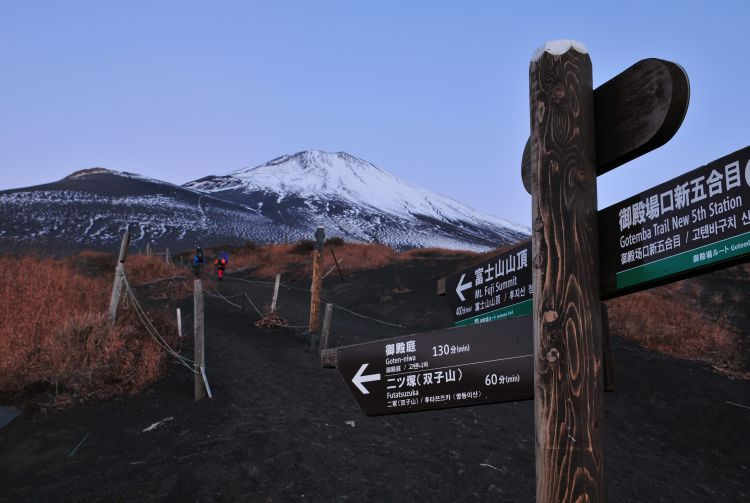 Mount Fuji reflected in Lake Kawaguchiko, a popular spot for photography
Mount Fuji reflected in Lake Kawaguchiko, a popular spot for photography
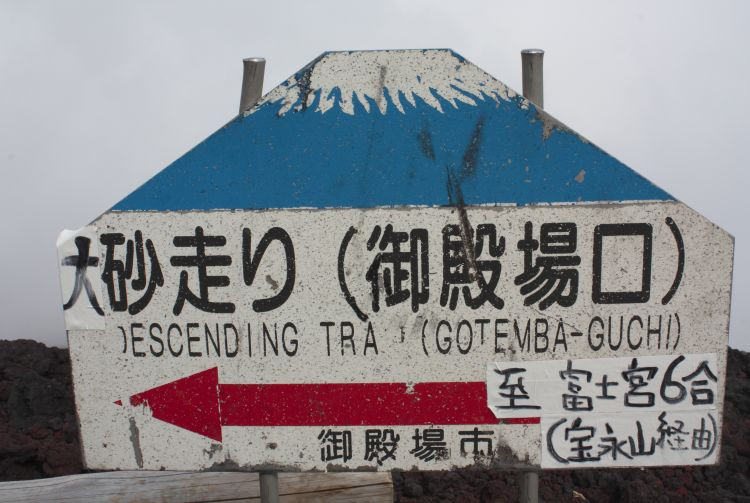 Gotemba Trail entrance
Gotemba Trail entrance
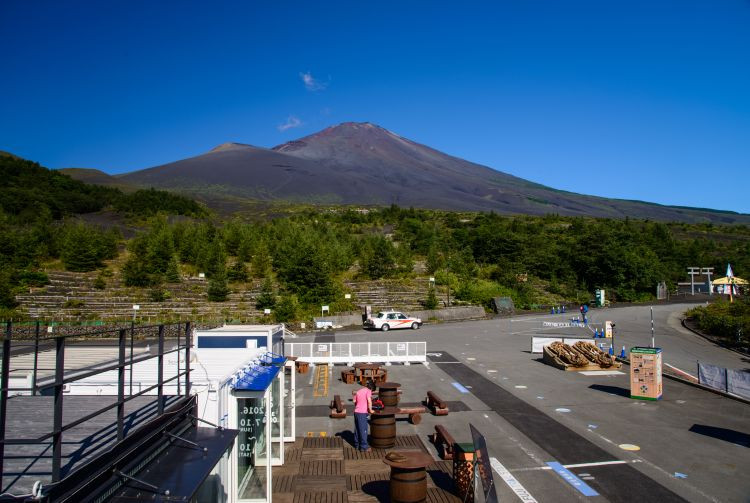 Bus stop at Gotemba 5th station
Bus stop at Gotemba 5th station
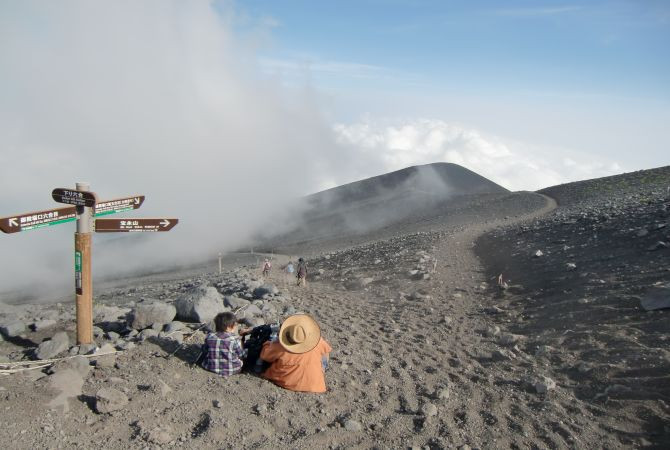 Climbers on Gotemba Trail
Climbers on Gotemba Trail
 Clear blue sky above the mountain
Clear blue sky above the mountain
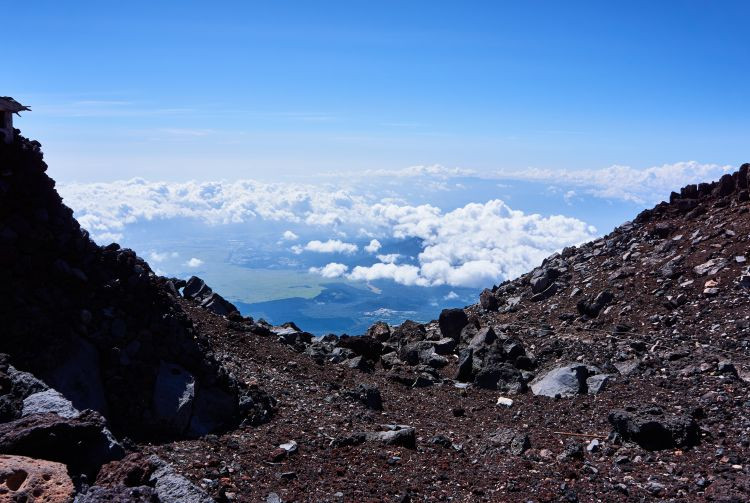 Hiker ascending the rocky trail on Mount Fuji
Hiker ascending the rocky trail on Mount Fuji



